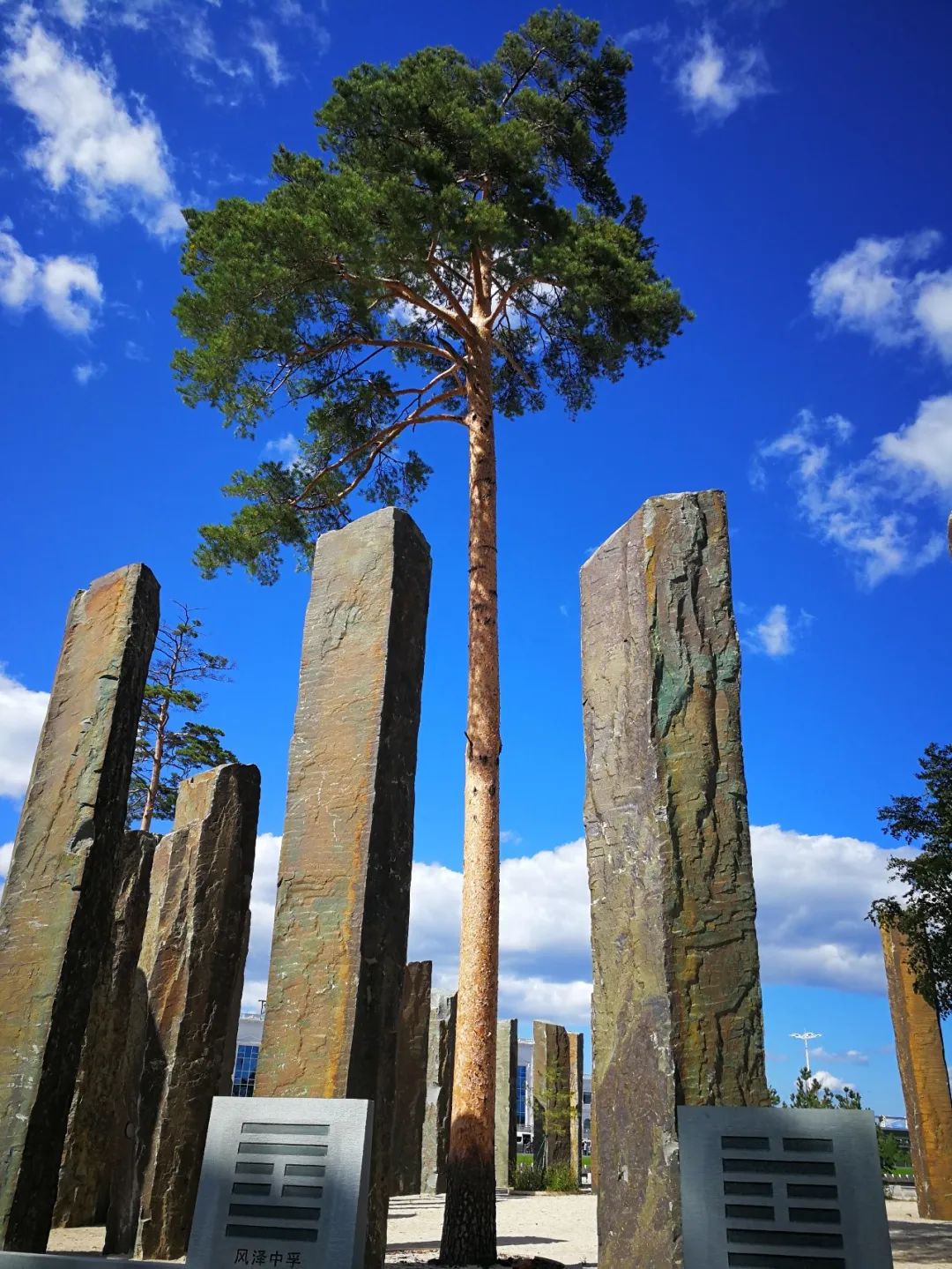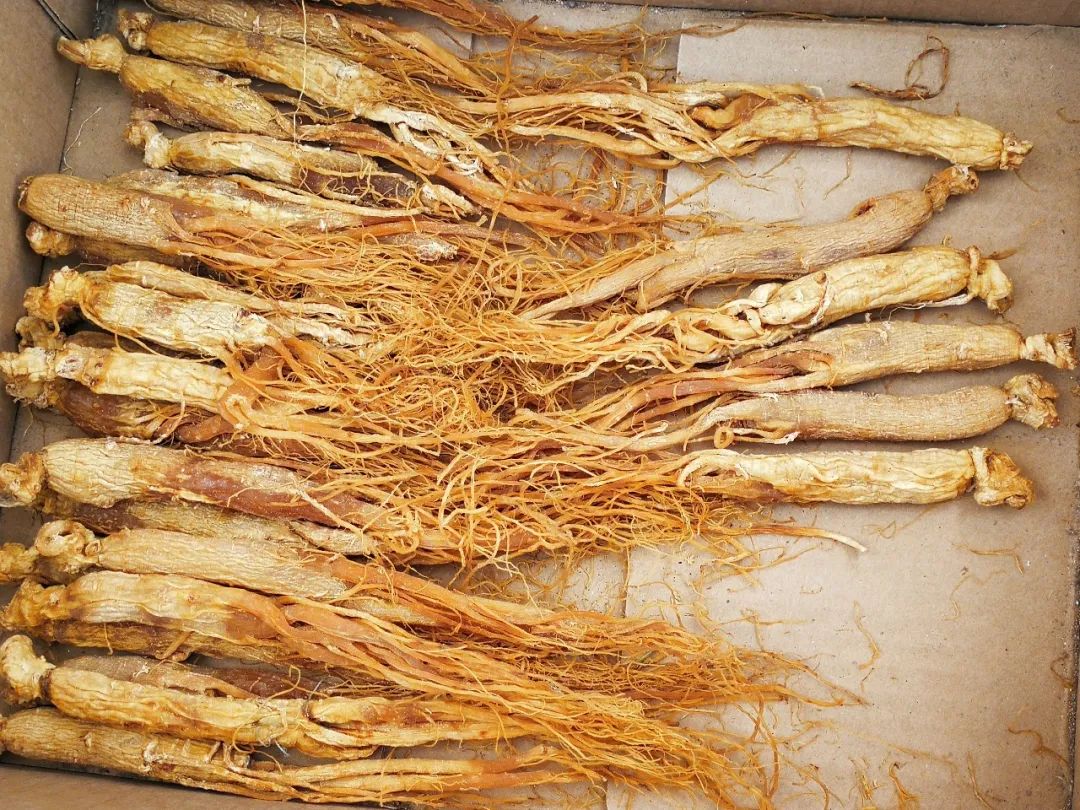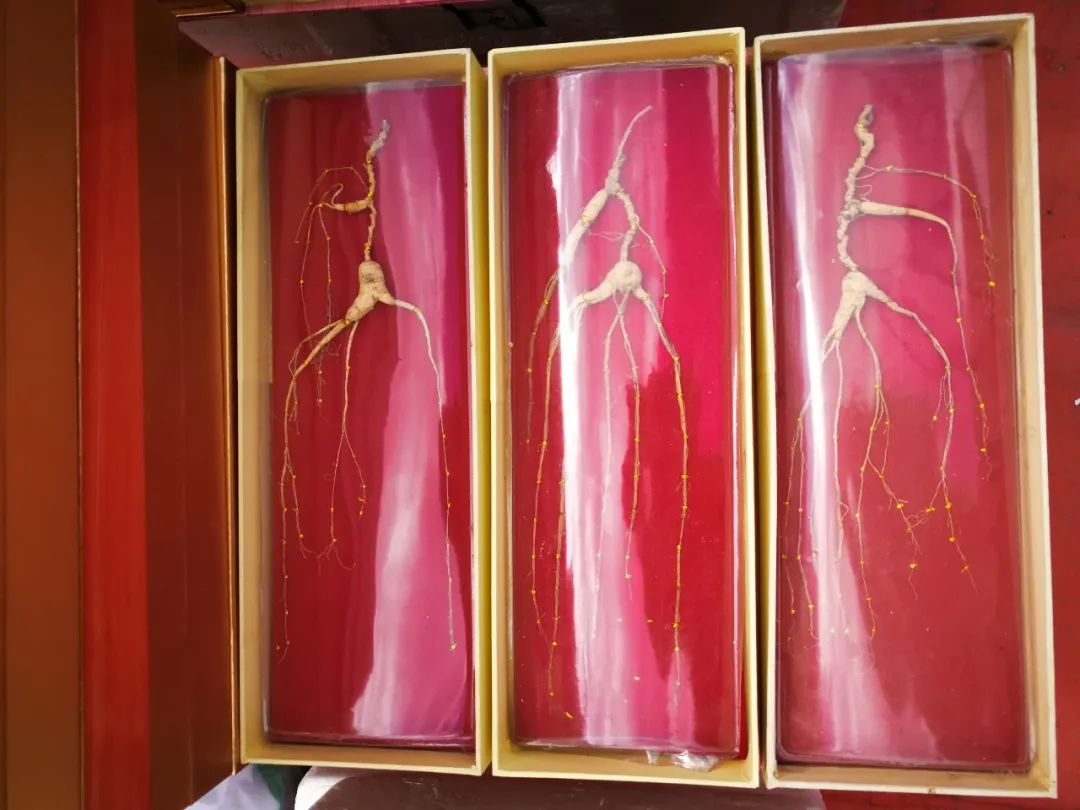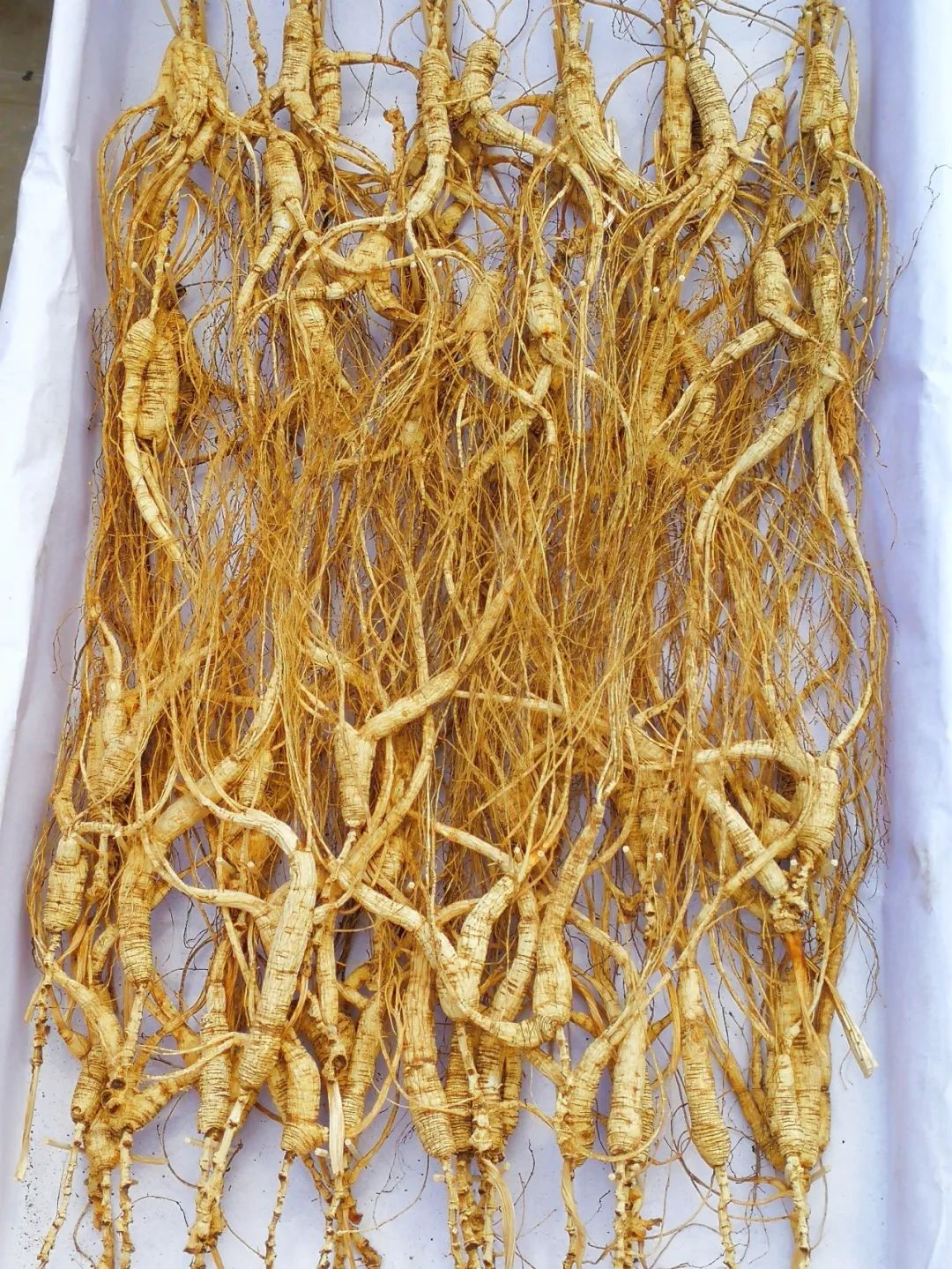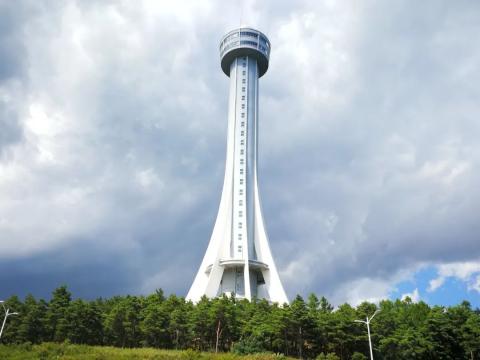
Starting from Yanji this morning, we drove to Erdaobaihe in Antu County, 190 kilometers away, and planned to climb the main peak of Changbai Mountain to see Tianchi from there.

We left Yanji City from where we entered the city the day before yesterday, passing through Longjing County, Toudao Town, Helong County, and Songjiang Town, and arrived at Erdaobaihe Town at around one o'clock in the afternoon. On the hillside in the suburbs of Helong County, I saw a farmer's orchard full of fruit trees, which were full of fruits. Under the sunshine, it was very gratifying. Pull over and go into the orchard to pick fruits yourself. While peeling pears for me to eat, the farmer introduced them as apple pears, which were almost ripe and would taste better in ten days. This fruit has the aroma of apples, the crispness of pears, a lot of water, and is very delicious. We bought several kilograms to eat on the road.

After leaving the orchard, we stopped at a platform to take photos and stopped at a roadside stop for lunch.

Next I fell asleep in the car. The car drove from Chen Ping all the way to Erdao Baihe and stopped in front of a "Baihe" train station. I met a few people from Ningbo who came to see Changbai Mountain Tianchi. They said that they did not go to Tianchi today because the weather was bad and it snowed on the mountain. Later, they took a plane to see it, but they didn't see it. They said the clouds were too thick. They left in disgust by train. It seems that Changbai Mountain Tianchi is not easy to see. I don’t know what our luck will be tomorrow and the day after tomorrow. We are looking forward to it.

01
The shocking Heluo Cultural Park
When passing by Erdaobaihe Railway Station, we saw a Stonehenge in front of the station square. We stopped the car and took a closer look. It was the "China Changbai Mountain Heluo Cultural Park".

According to the introduction of the garden: Heluo culture is the source of Chinese culture, Changbai Mountain is the sacred mountain of Guandong, Heluo culture is like the mother body, and Changbai Mountain culture is like the child, the two are connected by blood. Changbai Mountain culture needs to inherit and carry forward the mainstream Chinese culture. As a result, the Changbai Mountain Management Committee decided to build the "China Changbai Mountain Heluo Cultural Park". The first phase of the park covers an area of 56,000 square meters. Construction started in September 2016 and was completed in October 2017.

There are "three treasures" in the garden: one is Changbai pine, a rare tree species unique to the Erdaobai River area of Changbai Mountain and a national key protected plant. The skin is golden and unique, and the tree shape is graceful and graceful. It is commonly known as the beauty pine and is the welcoming pine in Changbai Mountain. The second is an extremely rare and precious hundred volcanic rough stone pillars. The stone pillars are arranged according to the rules of Hetu and Luoshu, pointing directly at Yuyu. The stone pillar has a diameter of 2.5 meters, a height of 8-12 meters and a weight of 110-150 tons. It was formed by the cooling and shrinkage of magma more than 7,000 years ago. The pillar is majestic, thick and majestic, witnessing the vicissitudes of Changbai Mountain. Gazing at Stonehenge is full of thoughts and expectations about the history and future of Changbai Mountain. The third is the profound and profound Hetu Luoshu. The Hetuluoshu in the garden is laid out with hundreds of stone pillars, explaining the origins of ancient Chinese culture.

The picture below shows the blue dragon and white tiger patterns.


There is a huge stone in the center of the square. There is a gap in the middle with the words "The Beginning of the Universe" written on it and a black and white fish pattern of Tai Chi and Bagua on the bottom.

The "Hetu Luoshu" in the ancient capital Luoyang is a national intangible cultural heritage. The use of huge volcanic stone pillars with thousands of years of growth rings to display the Hetu Luoshu shows that the people of Changbai Mountain remember Chinese history and inherit Chinese cultural consciousness and cultural confidence.

There are three other scenes in the garden: one is the musical fountain. The musical fountain adopts advanced 4F technology to show the charm of the musical fountain in three dimensions. The second is the reflection on the water surface. The reflections of the stone pillars and beauty pine trees displayed in the sky-blue mirrored pool are magnificent. The third is the desert projection. The projection of the stone pillars in the desert is straight, quiet and natural.

There are also bronze statues of the Four Saints in the garden: Fuxi, Dayu, King Wen and Confucius. Fuxi created the heaven and earth and painted the Eight Diagrams, which is a symbol of great wisdom; Dayu controlled the floods and demarcated the nine states, which was the recognition of great talent; King Wen created the Zhou rites and wrote the "Book of Changes", which is the embodiment of the great rites; Confucius compiled the "Six Classics" He founded Confucianism and wrote the Book of Changes to advocate benevolence and virtue, which were the beginnings of great culture.

There is a tripod standing in the garden: 6 meters high and 7 tons in weight. The body of the tripod is made of river map and Luoshu. It shows that the Chinese nation is prosperous and the country is peaceful and the people are safe. It shows that the Changbai Mountain Area is prosperous and people's lives are getting better and better.

There are floor sculptures lying in the garden: two large cast copper floor sculptures of Hetu and Luoshu with a diameter of 9.2 meters lie horizontally on the central axis of the garden. Hetu and Luoshu have always been relatively mysterious and rare. Here you can see the enlarged "River Map" and "Luoshu" real objects, which are the first of its kind in China and rare to see.

The cultural park also has an ancient corridor: it displays discussions of Heluo culture by celebrities from different historical periods in China, and rubbings of poems and inscriptions prove that Heluo culture is the ancestral source of Chinese culture.

There are Hanques guarding the garden: three groups of Hanques guarding the three directions of northeast and west. Statues of sages and sages are hung on the walls of the pavilions and corridors, and famous quotes and proverbs are written on the cultural walls, highlighting the glory of Chinese culture.

Changbai Mountain Heluo Cultural Park takes into account both history and reality, inheritance and innovation; it takes into account both the whole and the region, commonality and individuality. It will surely become an important landscape and window for promoting the culture of Changbai Mountain. The ancient sages and sages created a splendid historical civilization, and we need to pass it on from generation to generation.

As it is engraved on the stone pillar marking the main entrance of the garden: "Chinese culture has its roots in Heluo; Kunlun Ancestral Mountain has long white dragon veins."


Based on the "Hetu and Luoshu", the park has set up two sets of huge granite pillars, "Hetu" and "Luoshu", corresponding to the numbers 1 to 9.

There are some "beauty pines" unique to Erdaobaihe in the surrounding area, which complement each other with the huge stone pillars, making them mysterious and exquisite. Such a large Hetu Luoshu Stone Formation is rare in the country.


"Zhou Rites", "Shang Qi", "Chu Ci", "Qin Rules", "Han Fu", "Jin Zi", "Yuan Qu", "Ming Dian", etc., the characteristics of each dynasty and each generation are clear at a glance.

Legend has it that in ancient times, a dragon and horse appeared from the Yellow River, carrying the "He Tu" on their backs; a divine turtle appeared from the Luoshui River, carrying the "Luo Shu" on its back. Fuxi created the Bagua according to the Hetu Luo calligraphy and painting, and the "Book of Changes" originated from Fuxi's Bagua. Dayu succeeded in controlling floods according to the "Luo Shu" and divided the world into Kyushu. The ancient culture reflected in Hetu and Luoshu is extensive and profound, forming the source of Chinese civilization, the source of Chinese culture, Yin Yang and the Five Elements. Tai Chi, Bagua, Zhouyi, Nine Stars, Feng Shui, etc. can all be traced back to this source.

The formation period of HetuLuoshu was roughly between 4000 BC and 2000 BC. "Yi Xi Ci Shang" says: "The river produces pictures, Luo produces books, and the sages follow them."

Hetu and Luoshu express ancient China's astronomical and calendar achievements, mathematical level and concept of the universe through diagrams and mathematical representations. What is revealed is the operating laws of the universe, time and space, heaven, earth, people, and all things. They are the scientific and cultural achievements created by humans in ancient times and are the crystallization of the social production, life, and culture of the Chinese ancestors for thousands of years.

In 2014, "Hetu" and "Luoshu" were approved by the State Council and included in the fourth batch of national intangible cultural heritage lists.

Today is early September. It has snowed here a few days ago. Although we need to wear more clothes, the temperature is very suitable for our stay here. We lingered over at the "China Changbai Mountain Heluo Cultural Park".

02
The newly established "Chibei District"
The Erdaobaihe town we came to is located in the north of Tianchi in Changbai Mountain. To climb the main peak of Changbai Mountain and see Tianchi, we must enter from this scenic spot.

When I first came here, I was confused by the place names. The locals called it Erdaobaihe Town, and some unit signs said "Chibei District." Later, we asked Sister Kan Qingzhen, a retired cadre we met in Erdaobaihe, for advice. Understood. There are currently four units in Erdaobaihe Town: Baihe Forestry Bureau, Changbai Mountain Protection and Development Zone Management Committee and its affiliated Chibei District Management Committee, and Erdaobaihe Town in Antu County. The seal in the picture below reads: "People from Changbai Mountain, China".

The main department-level administrative center of the Changbai Mountain Protection and Development Zone Management Committee is located in Erdaobaihe Town. It has three scenic spot management committees: Chibei District is in Erdaobaihe Town; and Chinan District is in Fuzhou, Baishan City. Manjiang Town in Song County; Chixi District is located in Donggang Town and Songjianghe Town in Changbai Mountain Korean Autonomous County, on the western slope of Changbai Mountain.

Changbai Mountain also has an eastern slope, which is located in North Korea and belongs to Samjiyon County, Ryanggang Province, North Korea. The picture below shows the viewing trail from the east slope of North Korea to the surface of Tianchi Lake.

In 2005, the Jilin Provincial Party Committee, in order to increase the protection of the Changbai Mountain Nature Reserve, accelerate the cultivation of Jilin Province's advantageous tourism industry, and unify the management of Changbai Mountain, the Changbai Mountain Protection and Development Zone Management Committee was established after discussion and approval at the 7th Provincial Party Committee meeting in 2005. meeting. The level was upgraded from deputy department level to principal department level. The Jilin Provincial Forestry Department entrusted the Changbai Mountain Protection and Development Zone Management Committee with the reorganization of the Changbai Mountain Protection Bureau.
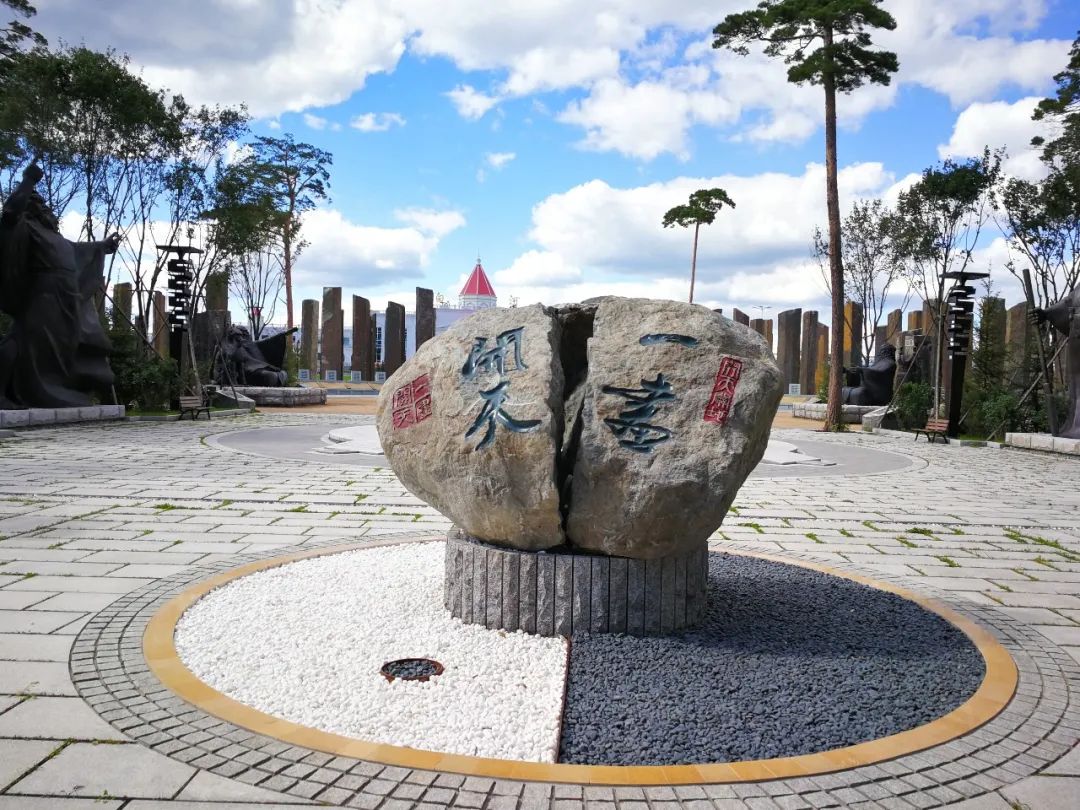
The Erdaobaihe area (because there are too many local units, we have to call it a region) is located in the southeast of Jilin Province. The entire area is a narrow strip running from southeast to northwest. It is adjacent to North Korea in the southeast and is located on the northern slope of Changbai Mountain, with an altitude of about 800 meters. , 35 kilometers away from the core landscape of Changbai Mountain and 65 kilometers away from the border between China and North Korea at Shuangmu Peak. It is the gateway to and from Changbai Mountain. It covers an area of 1,162 square kilometers and has a population of 63,500. It is rich in tourism resources and is known as the "No. 1 Town at the foot of Changbai Mountain" and the "Hometown of Beauty Pines". It is a tourist attraction with the reputation of "sacred mountains, holy water, strange forests, and fairy fruits". In September 2019, it was selected into the first batch of national all-region tourism demonstration areas. Changbai Mountain, a national 5A tourist scenic spot, Changbai Mountain Tianchi, Changbai Waterfall, underground forest, geothermal hot springs, Erdaobai River migratory bird paradise, etc. are well-known at home and abroad.

Chibei District has a temperate continental monsoon climate, with an annual average temperature of 3.5°C, the highest average temperature in July is 26.6°C, and the lowest temperature is -26.6°C in January; the annual average rainfall is 700㎜, and the frost-free period is 110 days. It lasts for 231 days and the maximum frozen soil depth is 120cm.

03
Baishan Forestry Bureau’s Logging Operation Sculpture Park
In the morning, we went to the logging park near Erdaobaihe Forestry Bureau to see the historical sculptures of logging operations in their forest area.

The full name of Baihe Forestry Bureau is Baihe Forestry Branch of Jilin Yanbian Forestry Group. It is located in the hinterland of Changbai Mountain. It was founded in 1971. The total forest management area is 190,470 hectares, the forest coverage rate is 91.1%, and the total forest resource storage volume is 26.6 million cubic meters. Currently, Total assets are nearly one billion yuan and approximately 10,000 employees.


It has jurisdiction over more than 20 grassroots units, including ten forest farms (implementation areas) including Baishan, Baixi, Baoan, Jinjiang, Laoling, Huangsongpu, Toudaobaihe, Erdaobaihe, Manjiang and Hengshan, among which two The forest farm is located in the construction area of Baihe Forestry Bureau near Baihe Town, Erdao, and is seven or eight kilometers away from the office building of Baihe Forestry Bureau.
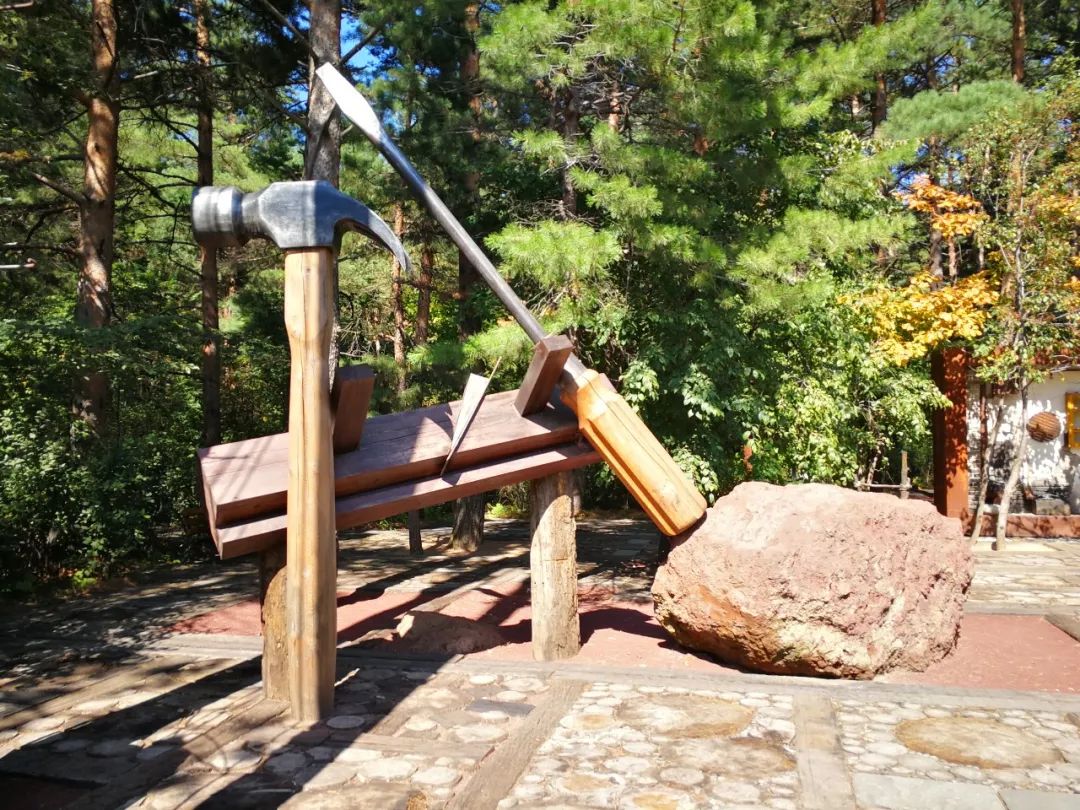
Next to the office area of Baishan Forestry Bureau, there is a group of carefully designed sculptures with themes related to logging production and life in the forest area.

The real scenes and sculptures reproduced through these realistic working tools and life scenes reproduce the hard life of forestry workers in Changbai Mountain at that time, allowing us southerners to have a better understanding of Changbai Mountain, as well as the operations of related forest industry enterprises and forestry workers in the Greater Khingan Mountains and Xiao Khingan Mountains forest areas in the three eastern provinces. life, and have a better understanding.

The sculpture gallery of more than 200 meters is right next to the road. Under the tall and beautiful beauty pine trees, there are exaggerated sculptures of logging tools, logging work scenes, and life scenes of local lumberjacks. The scenery is good, and the sculptures are exquisite. It has a strong atmosphere of life and no tickets are charged.



The Forestry Bureau authentically reproduced the living houses and utensils of workers in the forest area at that time, including wells, windlass, mills, etc., on the roadside, which amazed us southerners.
The broken halberd sinks into the sand, but the iron is not sold. It will be washed away and recognized by the past. The past is like smoke, and the roar of sawing and sawing trees hovering over the primeval forest has long been silenced. The glory of the past has faded away, and leaving these memorials allows people to recall and reflect on it from time to time.

The swords and guns are stored in the warehouse, and the horses are released in Nanshan. The logging tools in the Forestry Bureau Sculpture Park, such as exaggerated big saws and idle chains, hung on large tree stumps, tell people the significance of ecological protection.

04
A unique first-level protected plant—Beauty Pine
During our stay at Erdaobai River, we were attracted by the large white pines.

In Meirensong Park, the forest is quiet and the grass is like a carpet. There are tourists in twos and threes sitting on chairs under the trees to enjoy the scenery. Walking and sitting in the famous Changbai Mountain Beauty Pine Park is a good choice to enjoy the scenery and pass the time.

There are white pine trees that grow tall and tall, slim and graceful, like a pretty woman, so they are called Beauty Pines.

There is a passage in "Journey to Changbai Mountain" that describes the beauty pine: "The charming beauty pine shys away from the flowers and closes the moon. Its branches are like the fragrant arms of a young girl, stretched out, free and refined. The leaf crown is like the hair of a beauty, radiant and elegant. charming."

Beauty pine, also called Changbai pine, is the first pine in Changbai Mountain. It is the representative landscape of Changbai Mountain. It is a rare evergreen tree in the north. The trunk is straight and slightly curved. The needles are as green as a green umbrella and the bark of the tree trunk is orange. It looks like a fish and a lin, with vigorous and graceful posture. In the Changbai Mountain Beauty Pine Garden, there are more than a thousand beauty pines like this, and 352 ancient pines that are more than a century old. The pine waves and birds sing in the breeze, and the mountain flowers and buildings are reflected brilliantly under the white clouds.

Walking in the garden, you can see green grass and wild flowers when looking down, strong tree trunks coming into view when looking straight up, and looking up, you can see the green pine needles of Beauty Pine complementing the blue sky and white clouds.

A long time ago, Miss Luzhu, who was in charge of the flowers and plants in Changbai Mountain, fell in love with Wang Long, who made clouds and rain spread over the Northeast. They made Changbai Mountain look like a fairyland on earth and lived a happy life with the people. Suddenly one day, a black wind monster broke into Changbai Mountain and started killing people. Luzhu and Wang Long fought fiercely with the black wind monster, but were injured by the monster. The two had no choice but to ask the God of the East China Sea for rescue. The God gave Lvzhu a seed and told her that after eating the seed, she would turn into a big tree, and the aroma from the big tree could calm the monsters. But after turning into a tree, it can never be resurrected. In order to get rid of the harm to the people, Luzhu resolutely took the seeds, and Wang Long led the black wind monster to the bank of Erdaobai River. They started a fierce battle, but it was still difficult to win. So Luzhu ate the seeds and turned into a beautiful tree. The monster suddenly lost its magic power and was captured by Wang Long at the black wind outlet of Changbai Mountain. Wang Long also sneaked into the bottom of Tianchi Lake in Changbai Mountain. As time went by, the big tree multiplied into many small trees. In order to thank Lvzhu, people named these beautiful pine trees "Beauty Pine".
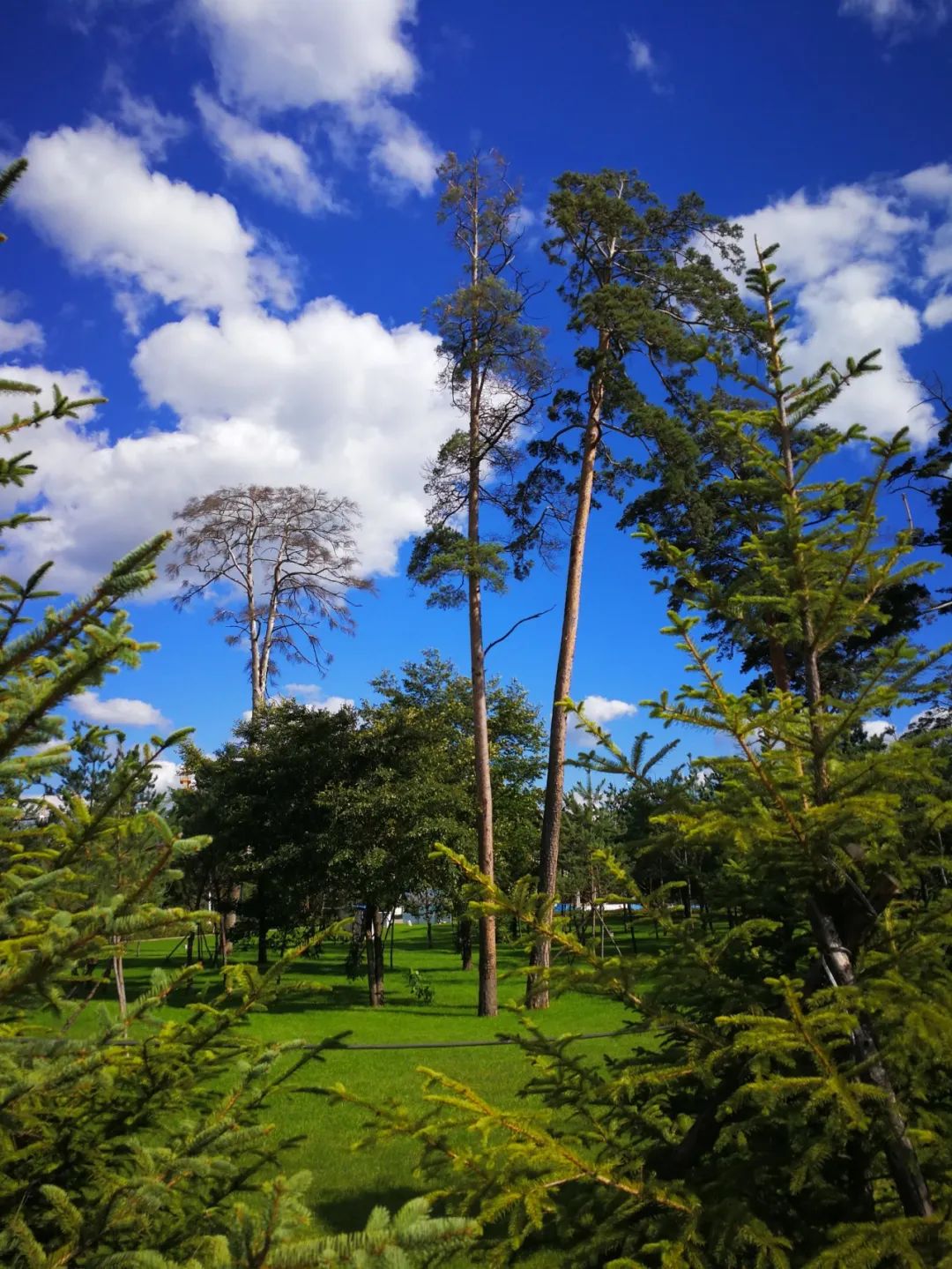
Changbai pine, also called beauty pine, is named after its shape like a beautiful woman. It is a unique and beautiful natural landscape in Changbai Mountain. Evergreen tree, 25-32 meters high, 25-100 cm diameter at breast height; the lower part of the trunk has brown bark with deep cracks and irregular rectangular lobes, and the upper part is brown to reddish-yellow, peeling off in thin sheets and slightly recurved. Winter buds are oval, resinous, with reddish-brown scales; annual branches are light brown-green or light yellow-brown, hairless, and 3-year-old branches are grey-brown. The needles have 2 needles in a bunch, which are thick and hard, slightly twisted and slightly flat. The female cones are dark purple-red, and the young fruits are light brown, stemmed and drooping. The cones are cone-shaped and oval, light brownish gray when mature; the seeds are oval or obovate, slightly flat, grayish brown to grayish black, with jointed seed wings, 1.5-2 cm long.


The natural distribution area of Changbai pine is very narrow. It can only be found on the northern slope of Changbai Mountain in Antu County, Jilin Province, China, in a narrow section along the Erdaobai River and Sandaobai River at an altitude of 700-1600 meters. There are still small patches of pure forest and scattered trees in the Hepingying area. .
Insert video: Changbai Mountain Primeval Forest

I took some pictures of beautiful pine trees and shared them with everyone.
05
A dazzling array of local specialties from Changbai Mountain
Sister Kan Qingzhen, a friend of Erdaobaihe, told me that today, September 10, is the market day in Erdaobaihe Town (Chibei District). There is a market every five days here.
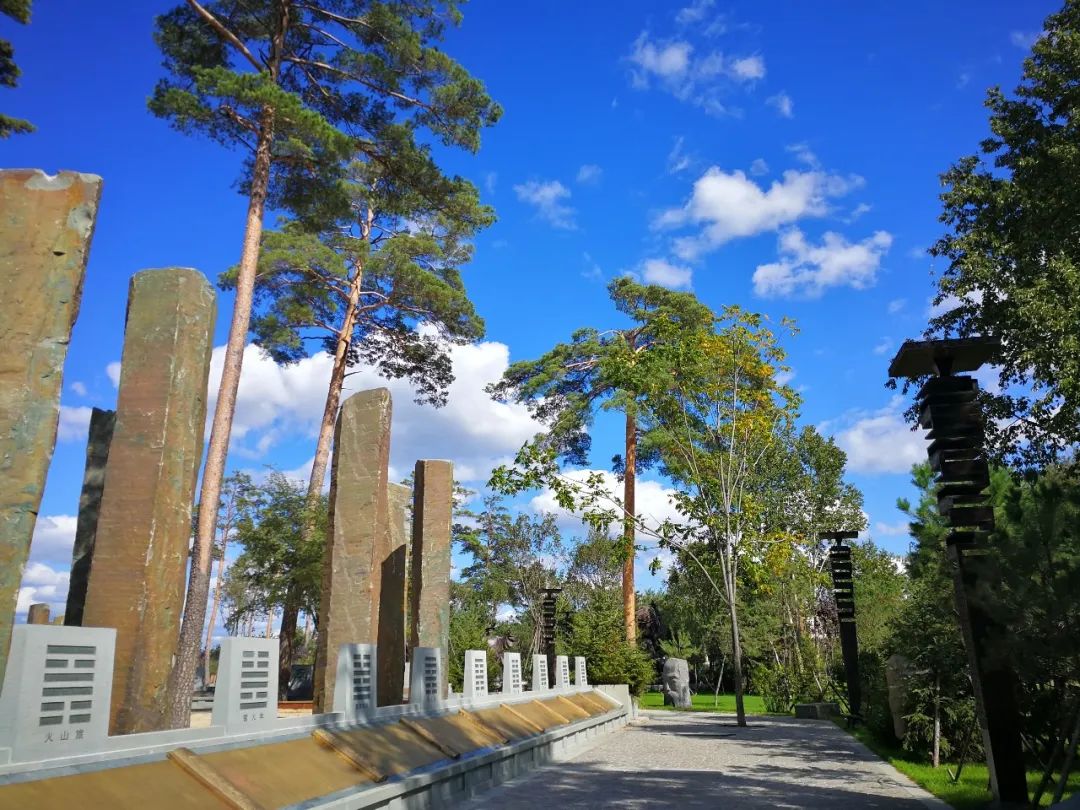
On Changqing Road and Xinglong Street in the east of the city, we saw that the streets were lined with vendors who came from all over to set up stalls, bringing a variety of small commodities and local specialties to the residents of this small town at the foot of Changbai Mountain. . The pictures below are some photos we took of local specialties in Changbai Mountain to share with you.
The three treasures of Northeast China that are hard to find in the woods are Hericium erinaceus.

Black dried mulberries.

Dried tobacco leaves, we saw the tobacco leaves grown in the fields on the roadside while driving.

The fruits of freshly picked hawthorn are not big;

Raspberries are red fruits that are a little sour and a little sweet. We bought them in Jiagedaqi and ate them.

They say they are wild kiwis, but I don’t know why they are so small. I have never tried them.

Wild blueberries are a treasure found in the forests of Changbai Mountain. The anthocyanin unit content in wild blueberries is much higher than that in artificially grown blueberries. And the price is not expensive, but picking is very difficult without special tools.

Thick plums, this kind of wild fruit is found in the mountains of the three northeastern provinces. It is a bit sour and sweet. My friend in Ergun told me that the Russians use thick plums with cores and grind them to make jam and add them to bread, which is very delicious.

Artificially cultivated Ganoderma lucidum.
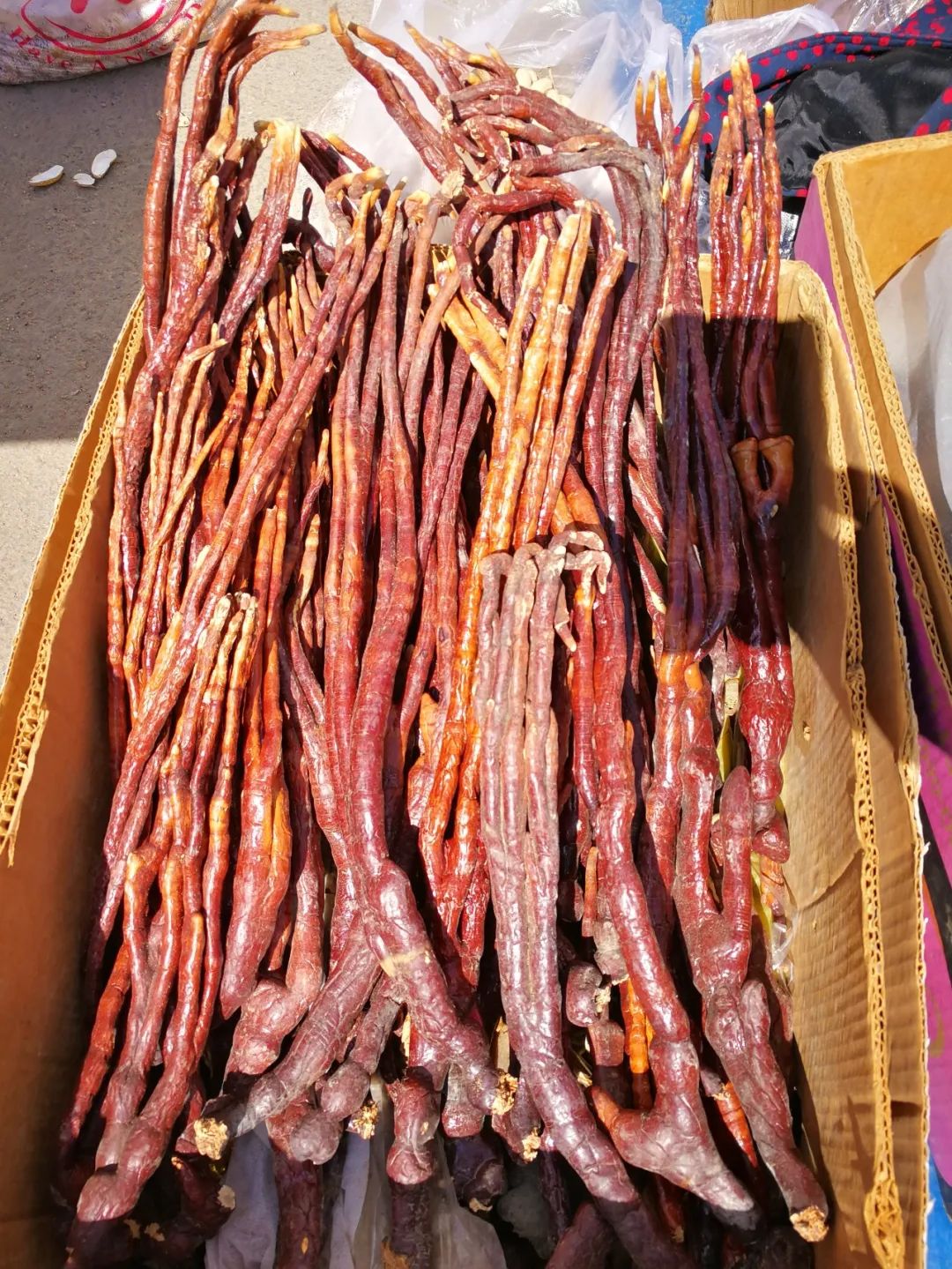
Hazelnuts picked from the forest cost 13 yuan per catty, and they are said to be nutritious only if eaten raw.

The forest frogs in the old forests deep in the Changbai Mountains are said to be eaten by scalding them in boiling water and dipping them in sauce. I can’t believe it.

Insert video: Rana in Changbai Mountain

Wild astragalus in high altitude meadows.

This is a tree mushroom that grows under chestnut trees, oak trees, etc., also known as sulfur fungus.

I saw ginseng, one of the three treasures of Northeast China, at the market in Chibei District. Located on the northern slope of Changbai Mountain, it was originally the Erdao District Forestry Bureau, so there are a lot of wild ginseng in the local forests. Wild ginseng is rare now, but there are rich varieties of artificially grown ginseng, including ginseng, red ginseng, and white ginseng. , Korean ginseng, American ginseng, etc. It takes five to seven years for these artificially grown ginseng to become effective. Some garden ginseng has not grown for a long time. It is generally called radish ginseng and is suitable for soup and cooking.










